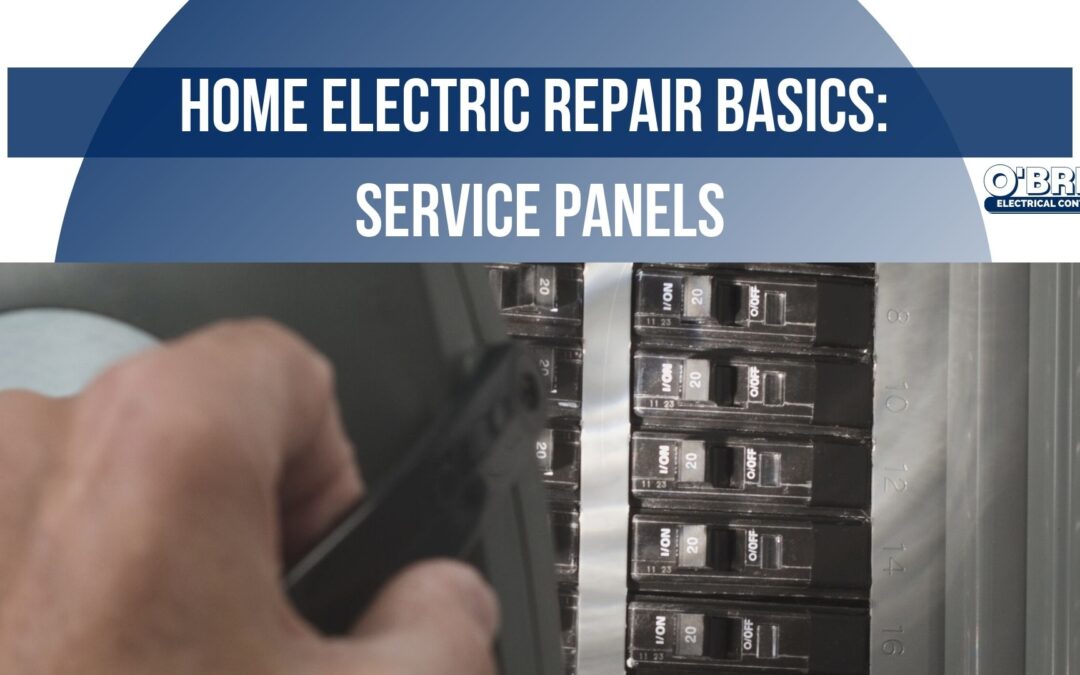Electrical repairs to you home can be pretty complex but there are some things you as a homeowner can handle. When it comes to your home’s electrical systems a few thing can be done to make sure everything is in working order. Your home’s electrical systems are the life and energy of your humble abode. But where does it all come from? You might have had a glance at it before, located in a garage or basement, this metal panel has a lot of control and power with your home even though you might not have thought so. For instance, you have a blower dryer turned on in your bathroom and all of sudden the GFCI outlet powering it switches over. You try to press the button to reset it but nothing works. That is when you will need to come face to face with your home’s electric service panel.
In a modern home, frequenting the electrical service panel is fairly rare. As new building codes were introduced along with improved technology, home electric services are typically free of issues. But for older homes like many in the Denver and Aurora areas, aging electrical systems might require your constant repair and service. That is why understanding your home’s basic electrical service panel should be a familiar aspect of yours. The home electrical service panel is an important piece of equipment that is designed to keep you safe and your home powered. You could even save some money with this information as operating an electrical service panel is vital to every and any home electrical repair service. Whether it be replacing an outlet or even wiring a whole house for remodeling.
What is an Electrical Service Panel?
The electrical service panel is the hub of your home’s power. It connects the outside power supply and service lines to the internal electrical system of your home. The service panel acts as the central distribution point that connects the power company’s service line or service drop to different wiring locations all over your home.
Even though the electrical service panel is connected to the power company’s service lines, it is the homeowner’s responsibility to maintain and update it. Also, oftentimes than not, any electrical issues inside a home is usually due to the electrical service panel.
Where is my Electrical Service Panel?
In most homes, the electrical service panel is tucked away in the less trafficked areas of your home or areas that remain unfinished. Such as:
- Garage
- Basement
- Hallway that leads to the outside or garage
- Pantry
- Closets
If you are stumped on where your electrical service panel is located, you might be able to identify the proximity of it by locating where the outside overhead power lines connect to your house. They should not be far from that connecting location. If you have underground wiring to your then there will be a little investigative efforts needed. But identifying the service panel should be easy as it is a large gray metal box.
Electrical Repair Service Panel Safety
Your home’s electrical service panel should be safe to touch and operate when the front panel that covers the circuit breakers is on. However, if the front panel is removed there will be many exposed wiring which can be considered dangerous. Therefore, if you are simply adding more circuits and circuit breakers it will be relatively safe as a DIY project.
While it is often easy enough to be cautious of areas in the service panel that your hands touch, be especially careful of tools that you are holding. The exposed service panel, screwdrivers, wire cutters, wire strippers, pliers, and more are items that can potentially touch parts of the service wires and transmit an electric shock to you.
If you are unsure about operating or repairing your electrical service panel please contact your licensed professional electrician for assistance.
Installing additional circuit breakers to your electrical service panel
You can add more circuits and circuit breakers inside your electrical service panel box as long as there are spaces. In many cases, the service panel will have available spaces. Some older homes may have completely filled out their spaces. In this case, an electrician can install a new, larger service panel box or add a smaller sub-panel and feed it from the main panel. This will require you to move older circuits to the sub-panel to make space for the feeder breaker.
Generally, you can determine if there are more spaces by looking at the metal knock-outs on the panel itself. Any space that is not knocked out should be available for the insertion of another circuit breaker, but not always: Remove the cover to see how many open spaces are available.
When should I hire an Electrician for my Electrical Repair and Remodel?
While homeowners are legally allowed to work on the service panel of their homes, more complex maintenance could benefit from having a licensed electrician service it. For safety reasons, whenever removing the front face panel of the electrical service panel it is prudent to contact a professional for assistance. Even the most seasoned DIY homeowners still choose to call in an electrician when it comes to any work that involves electrical systems.

